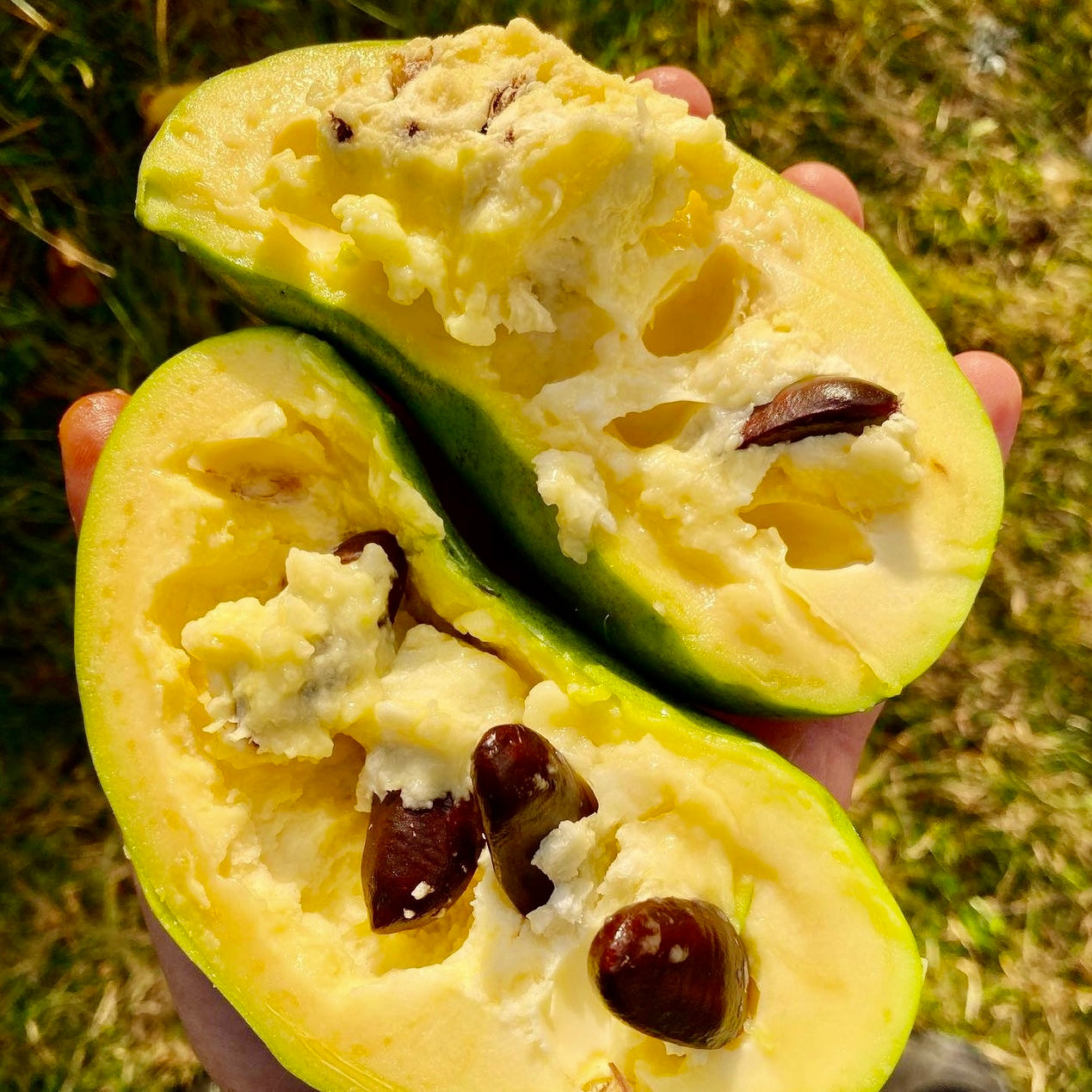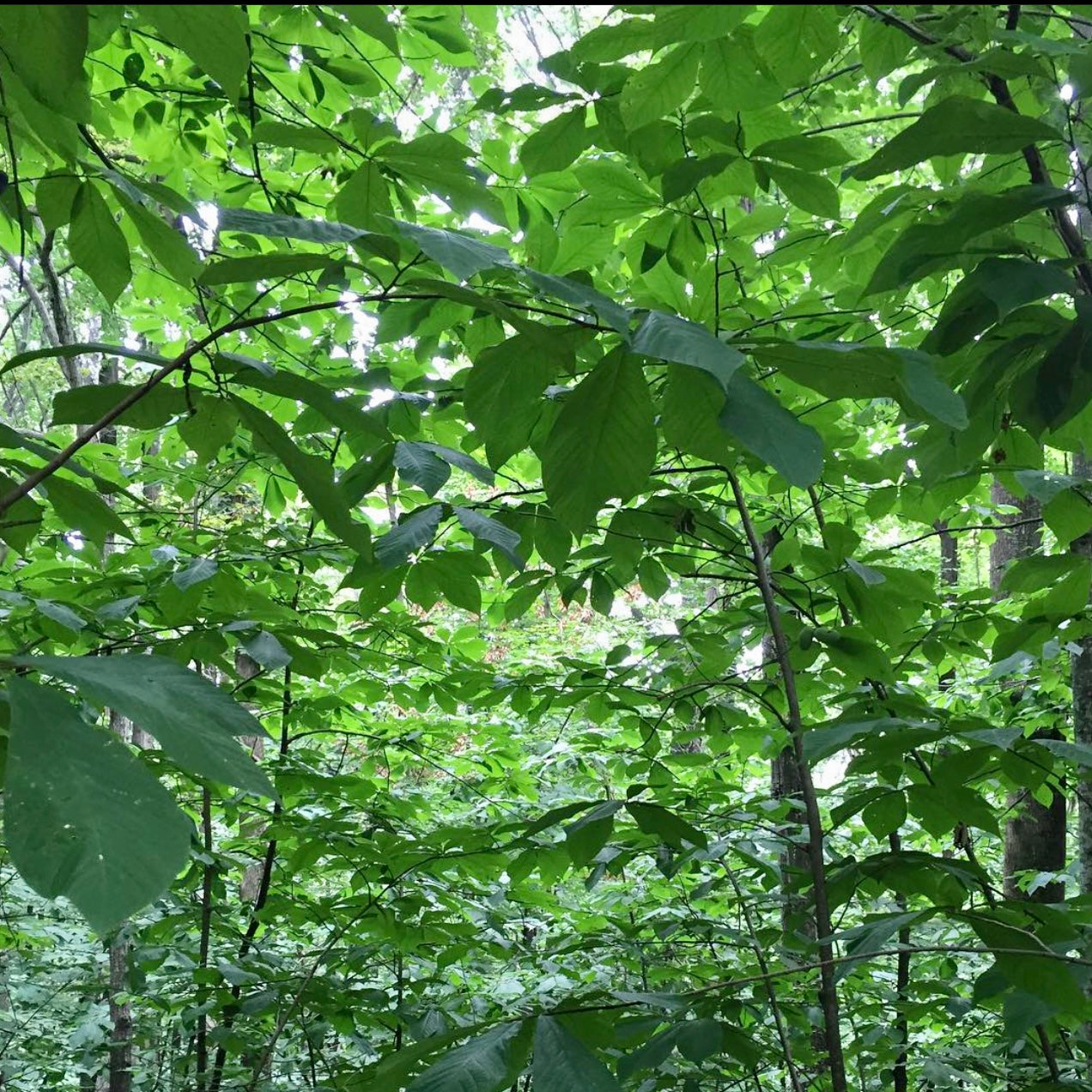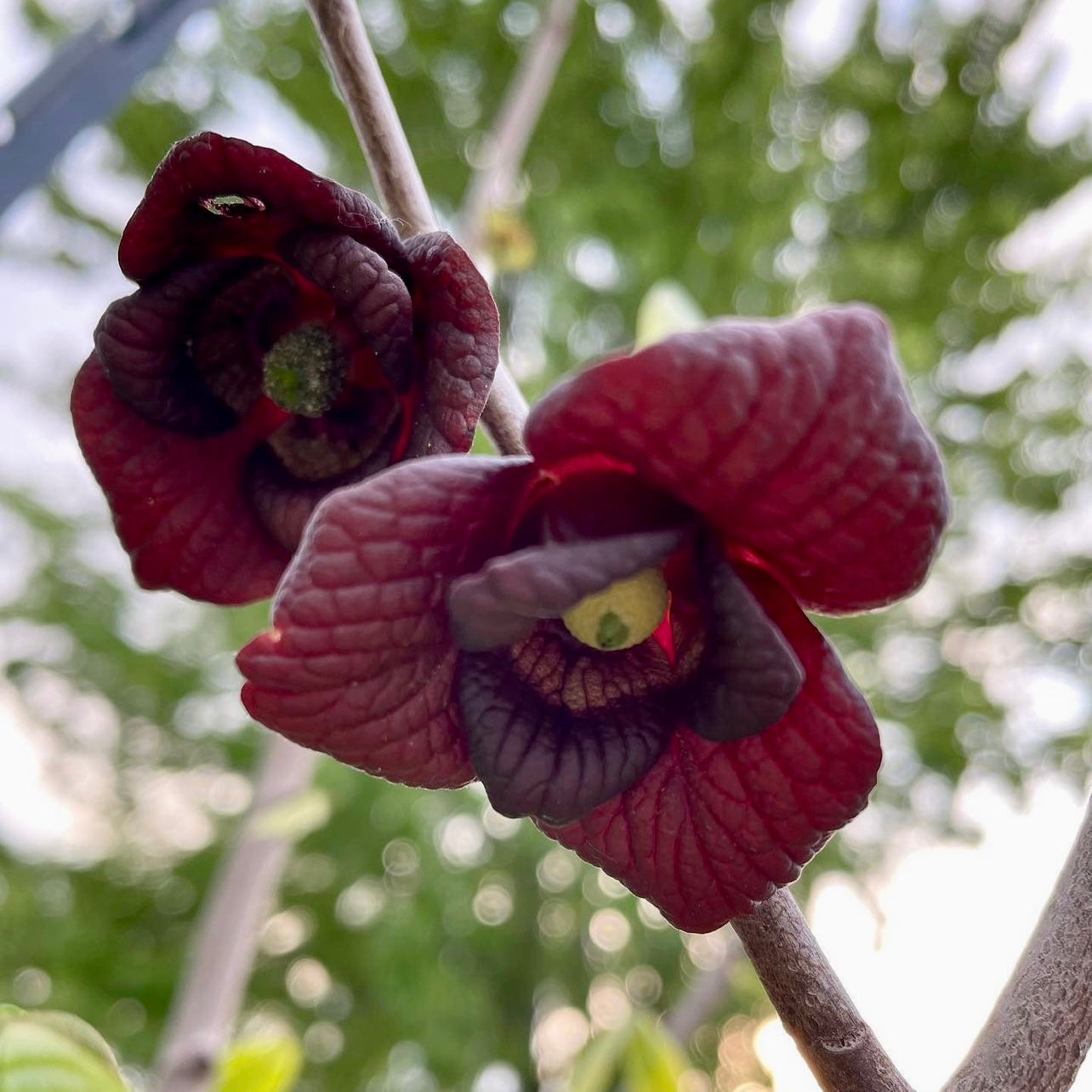Paw Paw (Asimina triloba)
Paw Paw (Asimina triloba)
Local Pickup Available in Harrop, BC
Couldn't load pickup availability
Why We Grow It
Why We Grow It
Pawpaws are all the rage to the food forest community. As an understory tree, they thrive in shaded areas, making efficient use of vertical space in layered systems. Their fruit provides a unique and nutritious food source, while their presence supports pollinators and other wildlife. Pawpaws’ preference for rich soils and ability to tolerate less-than-ideal conditions make them a resilient and rewarding choice for integrated landscapes and permaculture projects.
How the Plant Grows
How the Plant Grows
The Pawpaw starts its life slowly, developing a deep taproot that requires careful handling during planting. As a young tree, it prefers partial shade to avoid sun scorch. Over time, it transitions into a medium-sized tree with a broad, pyramidal crown. In early spring, the tree blooms with deep maroon flowers, followed by fruit that ripens in late summer to early fall. Its large, tropical-like leaves remain vibrant until autumn, adding aesthetic value to landscapes
Plant Size
Plant Size
Size at Maturity- Understory. Reaches up to 35 feet tall with a spread of 15-20 feet
Current Size- Large 12"-18", 2 year old seedling
Regular 6"-12", 2 year old seedling
Small Under 6", 2 year old seedling
Additional Info
Additional Info
The Pawpaw has deep cultural and historical roots, valued by Indigenous peoples and early settlers for its nutritious, custard-like fruit. Its distribution is thought to have been aided by Indigenous cultivation, extending its range northward. Once a common fall fruit in American diets, Pawpaw has gained renewed interest for its unique flavor and versatility in recipes, including desserts, sauces, and smoothies. In ecological design, its large leaves add shade and organic matter to the understory, improving soil health and supporting biodiversity. Its ability to thrive in marginal soils and shaded areas makes it an excellent candidate for agroforestry and integrated farm systems
The Pawpaw Tree, often referred to as a temperate tropical, is a fun member of a diverse temperate food forest. Known for its creamy, banana-mango flavored fruit, this understory tree thrives in temperate climates, including southern Ontario and the central United States. With its lush, tropical-looking leaves and maroon spring blossoms, the Pawpaw offers both beauty and sustenance. Perfect for homesteads and farmsteads, this historical treasure enriches biodiversity and provides a delightful, nutrient-dense harvest.
Share
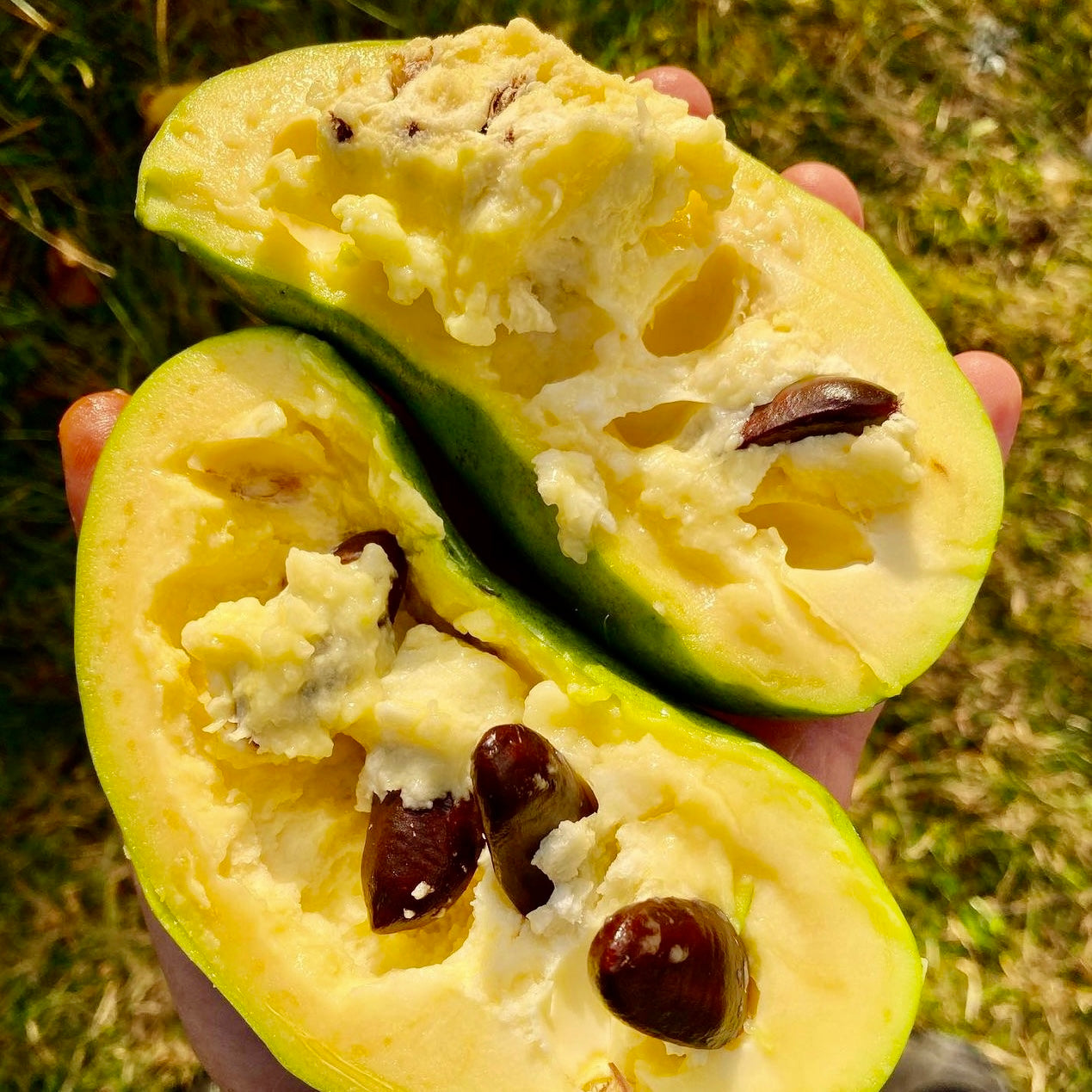
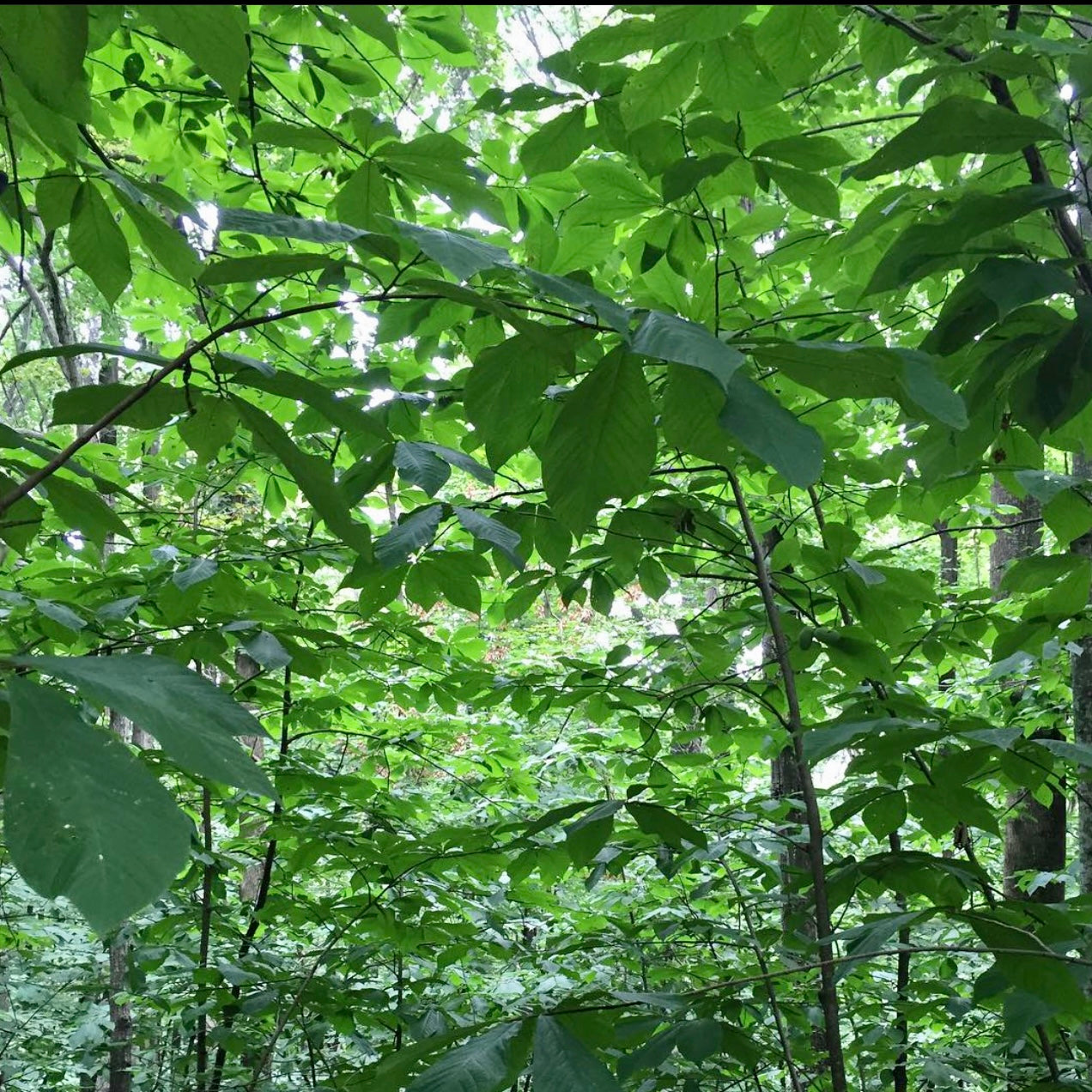
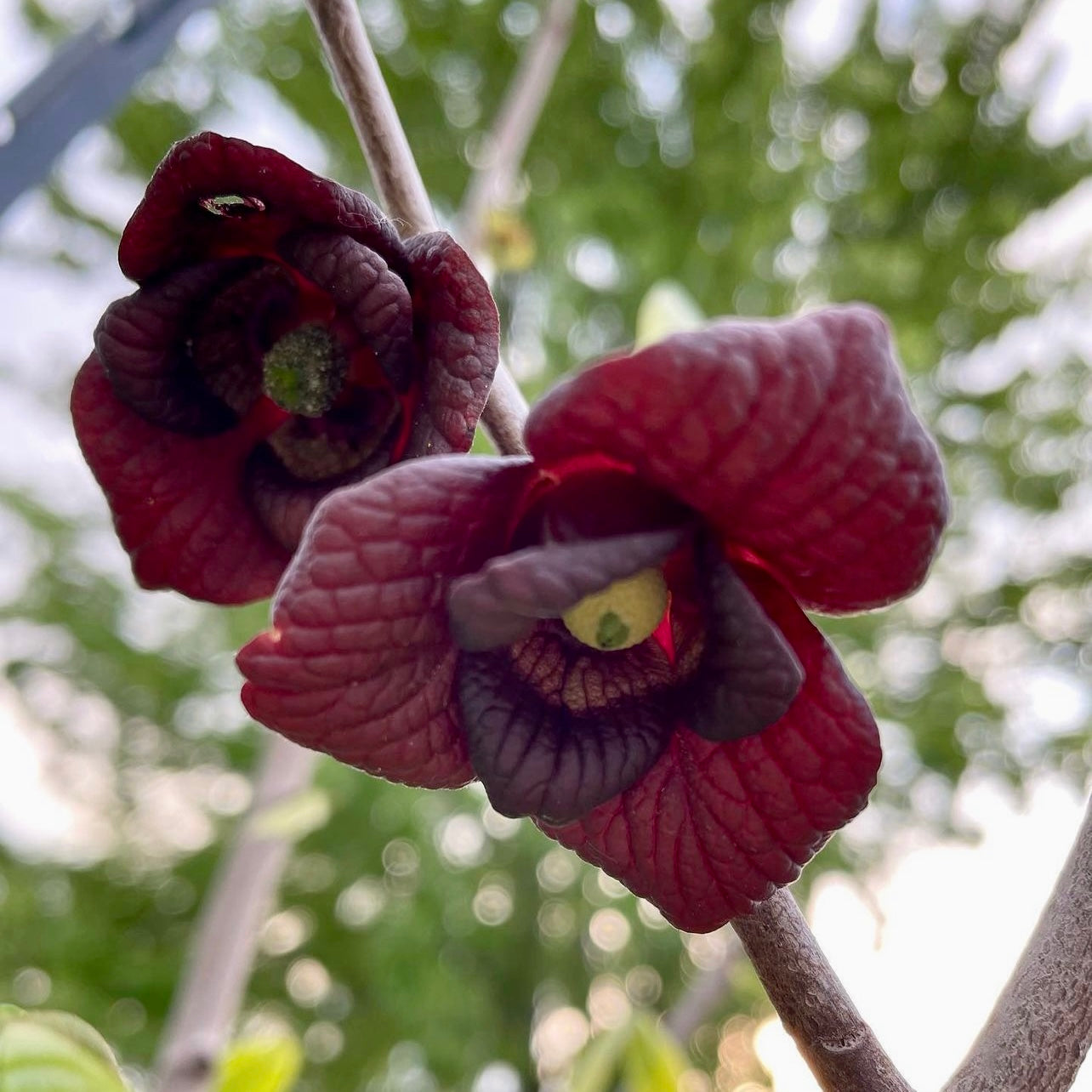
Plant Highlights
-

Water
Prefers consistent moisture; benefits from regular watering during establishment and fruiting.
-

Pollination
Requires cross-pollination from different varieties; planting multiple trees ensures consistent fruit production
-

Soil
Thrives in rich, well-drained loamy soils with a slightly acidic to neutral pH (6.0-7.0)
-

Years to Bear
Produces fruit in 4-8 years after planting, depending on care and conditions
-

Hardiness
Zone 5, tolerating temperatures as low as -29°C
-

Solar
Prefers partial shade when young and full sun (6-10 hours daily) for optimal fruit production in maturity
Subscribe to our emails
Lots of Free Growing Info. Be the first to know about new plants and exclusive discounts.

